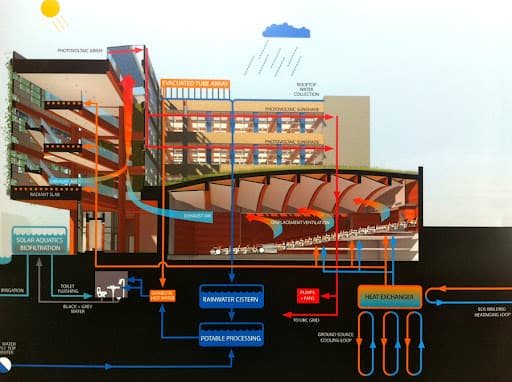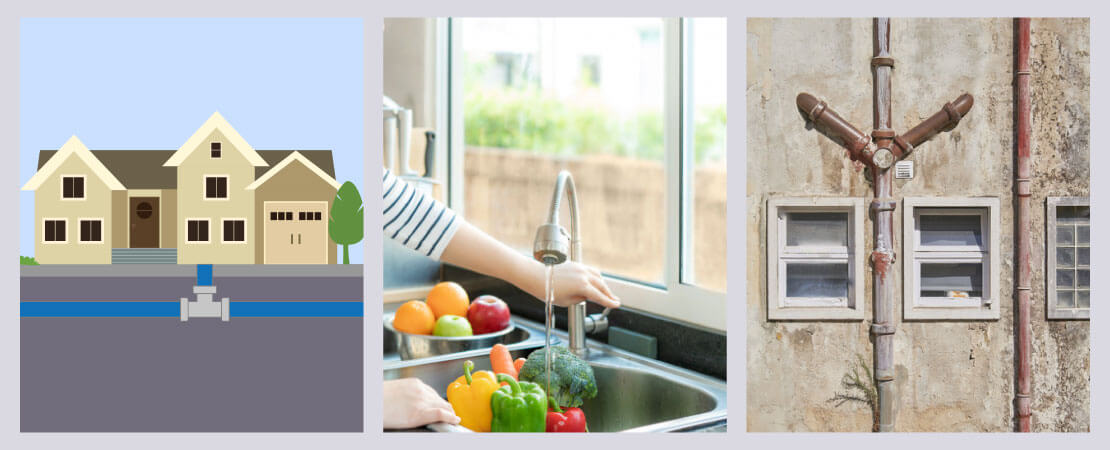What The Design of Your Home's Plumbing System Matters
What The Design of Your Home's Plumbing System Matters
Blog Article
Do you find yourself hunting for ideas on Exploring Your Homes Plumbing Anatomy?

Comprehending exactly how your home's pipes system works is necessary for every single homeowner. From delivering clean water for alcohol consumption, food preparation, and bathing to safely getting rid of wastewater, a well-maintained plumbing system is important for your family members's health and comfort. In this thorough guide, we'll check out the complex network that comprises your home's pipes and deal tips on maintenance, upgrades, and dealing with common problems.
Introduction
Your home's plumbing system is more than simply a network of pipelines; it's an intricate system that ensures you have access to clean water and reliable wastewater elimination. Recognizing its elements and just how they interact can aid you prevent costly repair work and guarantee everything runs smoothly.
Basic Elements of a Pipes System
Pipelines and Tubes
At the heart of your plumbing system are the pipes and tubing that lug water throughout your home. These can be constructed from numerous materials such as copper, PVC, or PEX, each with its advantages in terms of durability and cost-effectiveness.
Components: Sinks, Toilets, Showers, etc.
Fixtures like sinks, commodes, showers, and bath tubs are where water is utilized in your home. Understanding just how these components link to the plumbing system aids in detecting troubles and intending upgrades.
Shutoffs and Shut-off Factors
Shutoffs manage the flow of water in your plumbing system. Shut-off valves are essential during emergencies or when you need to make repairs, permitting you to separate parts of the system without interfering with water circulation to the entire residence.
Water System System
Key Water Line
The major water line links your home to the local water supply or a private well. It's where water enters your home and is dispersed to numerous components.
Water Meter and Pressure Regulator
The water meter measures your water use, while a pressure regulator ensures that water moves at a risk-free pressure throughout your home's plumbing system, protecting against damages to pipelines and fixtures.
Cold Water vs. Hot Water Lines
Recognizing the difference in between cold water lines, which provide water directly from the main, and warm water lines, which lug heated water from the water heater, aids in fixing and planning for upgrades.
Drainage System
Drain Pipes Water Lines and Traps
Drain pipes carry wastewater far from sinks, showers, and toilets to the drain or septic tank. Catches prevent drain gases from entering your home and also catch particles that could create blockages.
Ventilation Pipelines
Ventilation pipelines permit air into the water drainage system, stopping suction that could reduce drain and cause catches to empty. Correct air flow is important for keeping the stability of your plumbing system.
Value of Correct Drain
Ensuring correct drainage protects against backups and water damages. Frequently cleaning drains pipes and maintaining catches can prevent expensive repairs and expand the life of your plumbing system.
Water Heater
Types of Hot Water Heater
Water heaters can be tankless or standard tank-style. Tankless heaters warm water as needed, while storage tanks keep warmed water for immediate usage.
How Water Heaters Link to the Plumbing System
Comprehending just how water heaters attach to both the cold water supply and hot water circulation lines aids in identifying problems like not enough hot water or leaks.
Upkeep Tips for Water Heaters
Routinely purging your hot water heater to remove debris, examining the temperature level setups, and inspecting for leaks can prolong its life expectancy and enhance power performance.
Usual Pipes Issues
Leaks and Their Causes
Leaks can occur due to aging pipes, loose fittings, or high water pressure. Dealing with leaks immediately stops water damages and mold and mildew development.
Obstructions and Blockages
Clogs in drains pipes and commodes are often caused by flushing non-flushable products or a build-up of grease and hair. Using drain displays and bearing in mind what drops your drains can prevent blockages.
Indications of Pipes Troubles to Expect
Low water pressure, slow drains, foul odors, or uncommonly high water expenses are signs of potential pipes troubles that must be attended to quickly.
Plumbing Maintenance Tips
Regular Examinations and Checks
Arrange annual plumbing examinations to capture problems early. Try to find indications of leaks, corrosion, or mineral build-up in taps and showerheads.
DIY Maintenance Tasks
Simple jobs like cleaning faucet aerators, checking for bathroom leaks utilizing dye tablet computers, or shielding revealed pipes in cold climates can prevent major pipes concerns.
When to Call a Specialist Plumber
Know when a pipes problem needs expert competence. Attempting intricate fixings without correct understanding can cause more damage and higher fixing prices.
Updating Your Plumbing System
Reasons for Updating
Updating to water-efficient components or replacing old pipes can improve water top quality, minimize water expenses, and enhance the value of your home.
Modern Pipes Technologies and Their Advantages
Check out innovations like clever leak detectors, water-saving toilets, and energy-efficient water heaters that can conserve money and reduce ecological influence.
Expense Considerations and ROI
Compute the in advance costs versus long-term financial savings when thinking about plumbing upgrades. Several upgrades spend for themselves through reduced energy bills and less repair services.
Environmental Influence and Preservation
Water-Saving Fixtures and Devices
Mounting low-flow faucets, showerheads, and commodes can substantially reduce water use without compromising performance.
Tips for Minimizing Water Usage
Straightforward practices like fixing leakages quickly, taking much shorter showers, and running full lots of laundry and recipes can save water and reduced your utility costs.
Eco-Friendly Plumbing Options
Think about sustainable pipes materials like bamboo for floor covering, which is durable and eco-friendly, or recycled glass for counter tops.
Emergency situation Preparedness
Actions to Take During a Pipes Emergency
Know where your shut-off shutoffs are located and exactly how to turn off the water system in case of a ruptured pipe or significant leak.
Value of Having Emergency Get In Touches With Convenient
Keep call information for regional plumbers or emergency solutions conveniently available for fast feedback during a pipes situation.
DIY Emergency Situation Fixes (When Applicable).
Short-term solutions like using duct tape to spot a dripping pipe or placing a container under a leaking tap can lessen damages till a specialist plumber arrives.
Final thought.
Comprehending the composition of your home's pipes system equips you to preserve it successfully, conserving money and time on fixings. By complying with routine maintenance routines and staying informed about modern plumbing technologies, you can ensure your plumbing system operates efficiently for years ahead.
Exploring Your Homes Plumbing Anatomy
Water Supply System
Main Water Line: This is where water enters your home from the municipal supply or a private well.
Water Meter: Typically located near where the main water line enters the property, it measures the amount of water used.
Shutoff Valve: It s crucial to know where this is in case of emergencies. It allows you to turn off the water supply to the entire house.
Pipes and Fittings: These distribute water throughout your home. Materials can include copper, PVC, or PEX.
Drain-Waste-Vent (DWV) System
Drains: Located in sinks, showers, and tubs, these carry wastewater away.
Traps: U-shaped pipes under sinks that hold standing water, blocking sewer gases from entering the home.
Vents: Pipes that lead from the DWV system to the outside, preventing vacuum formation and allowing gases to escape.
Sewer Line: Carries all wastewater from the home to the municipal sewer system or a septic tank.
Fixtures and Appliances
Sinks, Toilets, and Showers
Dishwashers and Washing Machines
Water Heaters
Maintenance Tips
Regularly check for leaks in exposed pipes and around fixtures.
Inspect the water heater annually for signs of wear.
Clean drains and traps to prevent clogs and odors.
Know how to shut off water to individual fixtures.
When to Call a Professional
Major leaks or burst pipes
Installation of new pipes or fixtures
Septic tank issues
Remodeling projects that involve plumbing changes
Conclusion
Understanding the anatomy of your home's plumbing is key to maintaining a functional and efficient system. Regular checks and knowing when to call in the experts can save you time, money, and stress.
https://www.mavyn.com/blog/exploring-your-homes-plumbing-anatomy

Exploring Your Homes Plumbing Anatomy
Water Supply System
Drain-Waste-Vent (DWV) System
Fixtures and Appliances
Maintenance Tips
When to Call a Professional
Conclusion
Understanding the anatomy of your home's plumbing is key to maintaining a functional and efficient system. Regular checks and knowing when to call in the experts can save you time, money, and stress.
https://www.mavyn.com/blog/exploring-your-homes-plumbing-anatomy
We were made aware of that write-up about from a friend on a different website. Please pause to promote this blog posting if you liked it. Kudos for being here. Return soon.
Get Offer Report this page